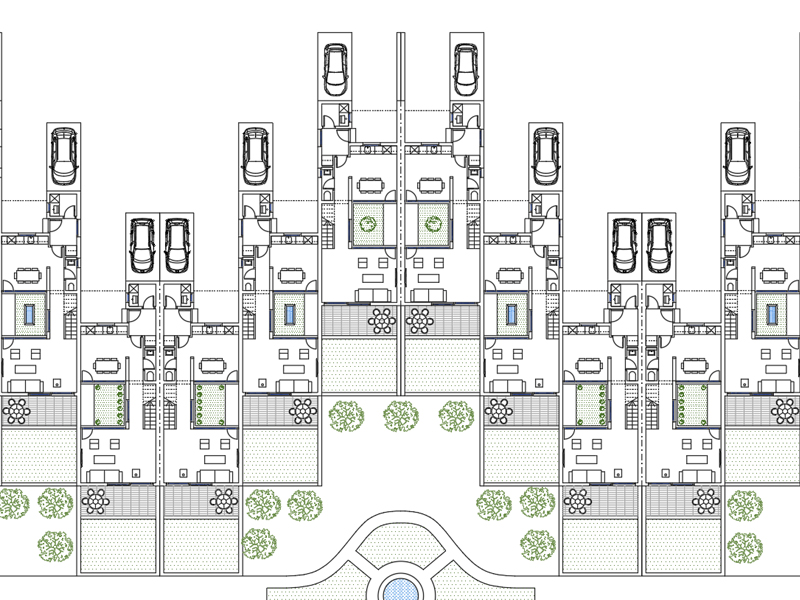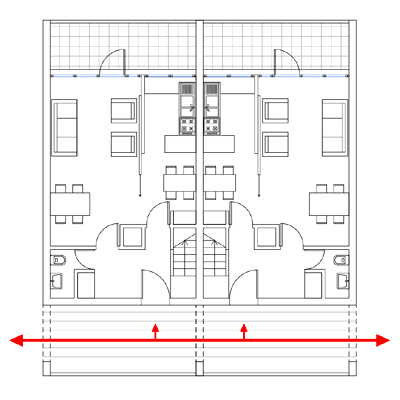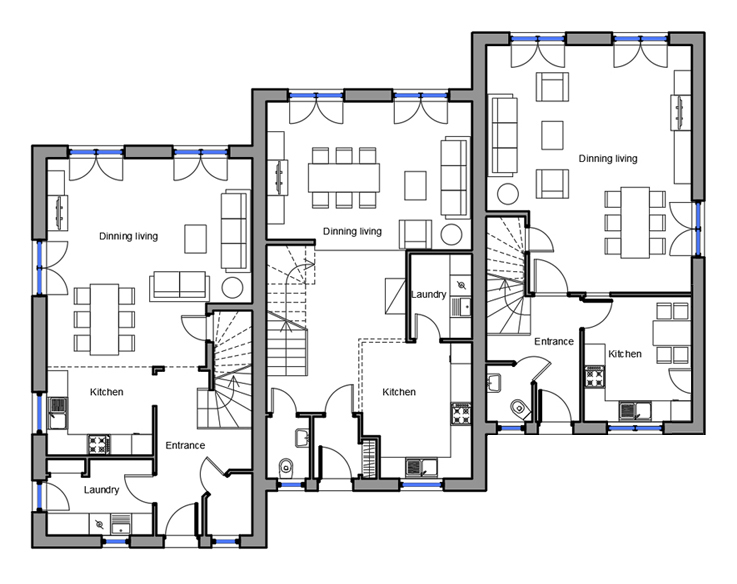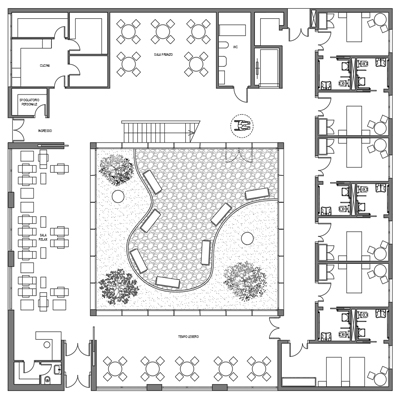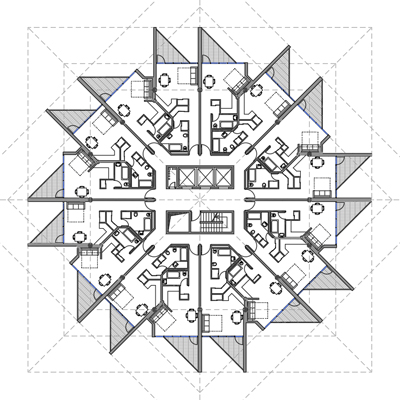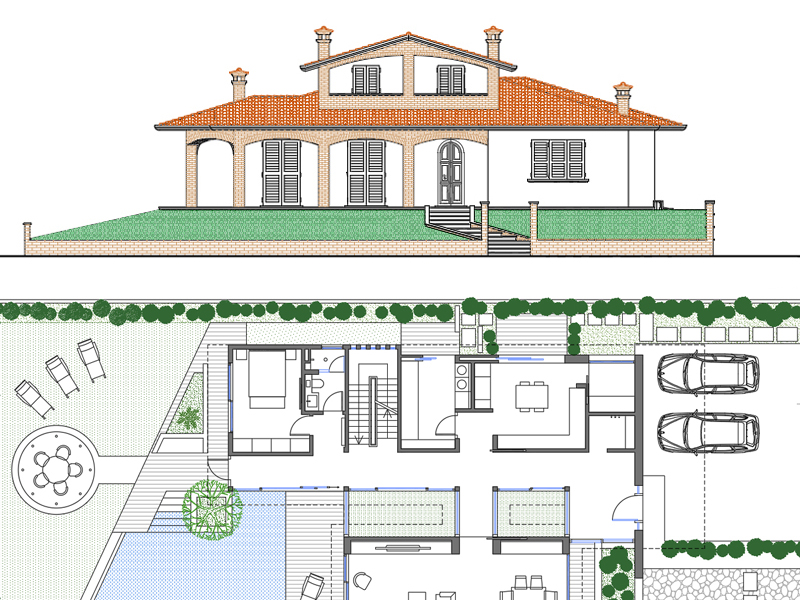Housing construction
Mix of tradition and innovation
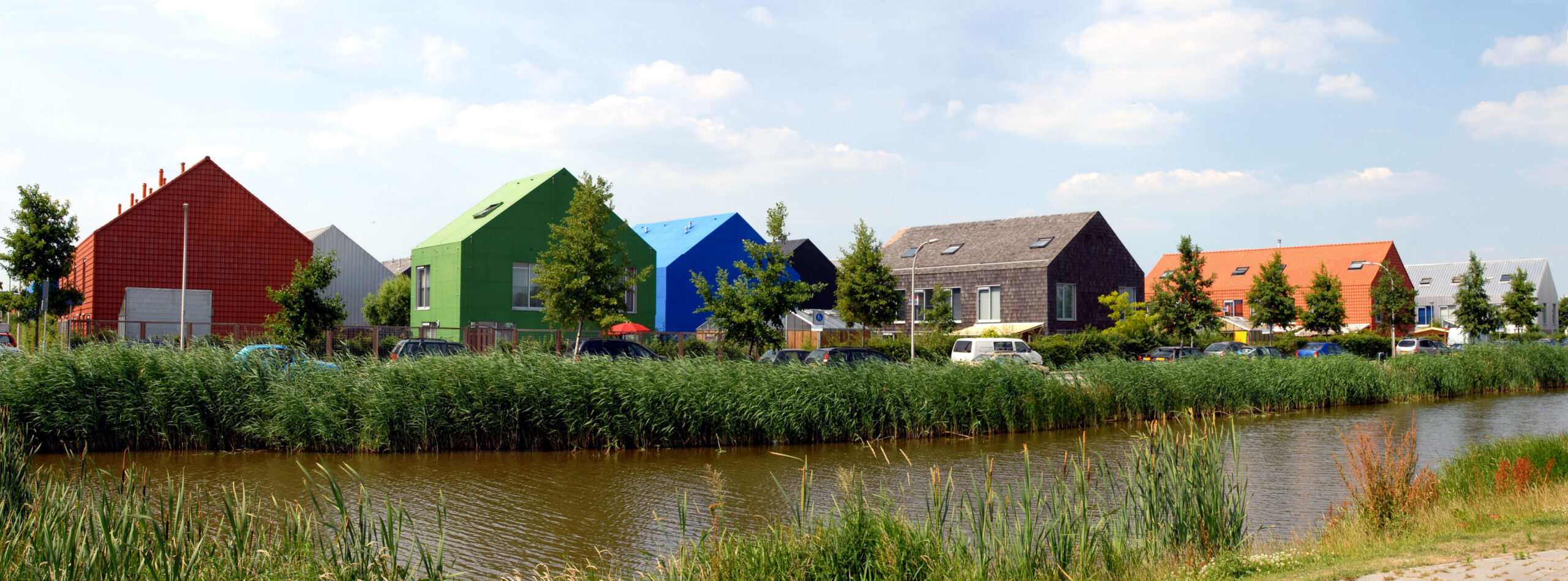
Residential design is a complex discipline and full of aspects to consider, however this article aims to provide a brief guide that can outline the key concepts of this specific sector. In fact, it is good to make a subdivision of the different types of housing and the characteristics that determine their characteristics and physical conformation. Below we will see how the introduction of the type, and the forms and functions related to it, over the years has influenced and defined the residential models that still affect urban and extra-urban scenarios today. The consequence of this aspect is represented by the diffusion of specific housing schemes in constant transformation. In fact, today often different construction systems are mixed to form mixed residences aimed at responding to the ever-changing needs of a vast and differentiated catchment area.
Salient characters
The first aspect to consider concerns the class to which the building type under analysis belongs, namely that of permanent residential construction. The latter includes two macro categories: single-familyresidences and multi-family residences which are characterized by different types of building structures.
The physical conformation of each individual building is determined by numerous factors such as the density that must be obtained and compliance with urban planning constraints, the relationship that one wants to establish with the context, the socio-economic aspects, respect for the environment and the exploitation of resources present in nature. In fact, all the elements mentioned will determine the appearance and characteristics of the housing units and the access and connection components between the parts.
Furthermore, the correct organization of the distribution spaces and apartments will maximize the clarity of the routes and restore to the inhabitants that sense of belonging to the places, today too often lost. Depending on the type of building, the relationship between roommates and that between inhabitants and the surrounding environment will change.
For example, in the case of multi-storey buildings, the only spaces to create an opportunity for meeting will be the stairwells and elevators, while in homes with distributive balconies or galleries, the meeting and exchange will take place more frequently. In fact, the routes at high altitude, in addition to representing a characteristic constructive element, will favor socialization between co-inhabitants. This last aspect will be carefully analyzed as it is decisive not only to foster the relationship between condominiums, but also to ensure their safety and security.
Brief analysis of housing types
The most common residences on the Italian territory are divided into three main categories and they are closely linked to the type of final user they will host: these are single-family, multi-family and collective residences.
SINGLE-FAMILY RESIDENCES
As can be seen from the name, this type of house is designed to house a single family unit. Usually these are villas with two or more floors, equipped with an appurtenant area in front, intended for greenery. This construction can be placed on the lot independently or grouped. In the first case we are talking about an isolated building, which is spread over several floors and includes a basement or basement level that can accommodate taverns, garages or gymnasiums. This is an optimal solution when there is a low building density.
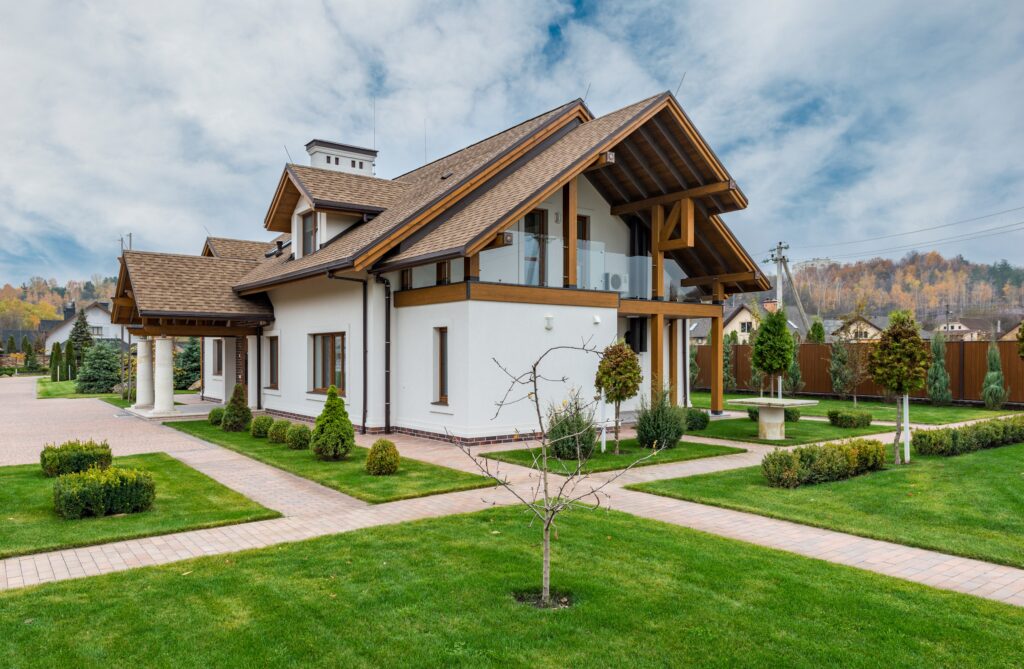
As for the grouped houses, they represent independent but contiguously positioned units. This typology includes double houses, side by side and superimposed ones. The paired houses consist of two independent but adjacent cells, which share a single perimeter wall; the terraced houses are characterized by independent entrances and by two walls shared between several adjacent cells. Finally, the superimposed houses are characterized by two independent housing units which can be accessed on the ground floor and via an external staircase to reach the upper levels.
It is therefore clear how building design can provide for the aggregation of individual cells and is able to generate housing systems that vary in conformation and building capacity.
To view and download various examples of terraced houses in dwg format click here
MULTI-FAMILY RESIDENCES
Unlike single-family homes, this type of residence is intended for several families.
These are buildings of larger dimensions, the surface of which is divided into multiple housing units which can be accessed via paths and special distribution elements. Sometimes, the building complexes are equipped with indoor or outdoor common areas, intended for recreational and service activities, in order to encourage socialization between condominiums.
Within the current urban scenarios, multi-family residences are the most common as they meet the needs of high housing density at low cost. These residential types can be organized according to different systems, generating buildings with horizontal, vertical development, with overhangs and terraces or with common accesses along the balconies.
Let’s now see the main types.
Building with in-line typology
These are multi-storey buildings with a variable number of apartments distributed on each level.
The most common solution sees two for each stair block. Originating from the multiplication of standard modules, the in-line building is often placed side by side with others with the same conformation, giving rise to complexes with variegated shapes. Examples are court, slat and corner systems.
To view and download various examples of linear multi storey building in dwg format click here
Tower building
In this case the development in height is greater and the building is characterized by apartments overlooking at least two fronts. Great importance is covered by vertical connections such as stairwells and elevators, which serve all floors of the building to give access to the individual apartments. Given the high population density, this residential type must comply with the safety requirements in terms of accessibility and fire prevention. For this reason, there is often an external safety staircase and the rules relating to the quotas of the premises must always be respected. Finally, the building must comply with specific hygienic-sanitary standards despite the fact that it is a solution aimed at maximizing the use of space in height.
To view and download various examples of tower buildings in dwg format click here
Balcony building
The element that most characterizes this type is the balcony that extends along the entire body of the building, fulfilling the function of distribution path to the individual real estate units. Depending on the type of apartment, the access balcony is present on all levels for simple accommodation, or on alternate floors if the houses are distributed on two (duplex) or three levels. This solution is naturally intended for multiple groups of tenants and the apartments are characterized by an organization of the internal environments aimed at ensuring the privacy of users. For this reason, on the front where the gallery is located, the service areas will be placed with openings at an adequate height to allow for confidentiality. The bedrooms will never overlook the common balcony. The length of the gallery can vary and in relation to this the staircase body is designed which can occupy different positions: at the head, between the lodgings or outside the passage. Depending on the characteristics of the gallery, which must always allow free access to at least two people, there will be one or more stairwells and a lift.
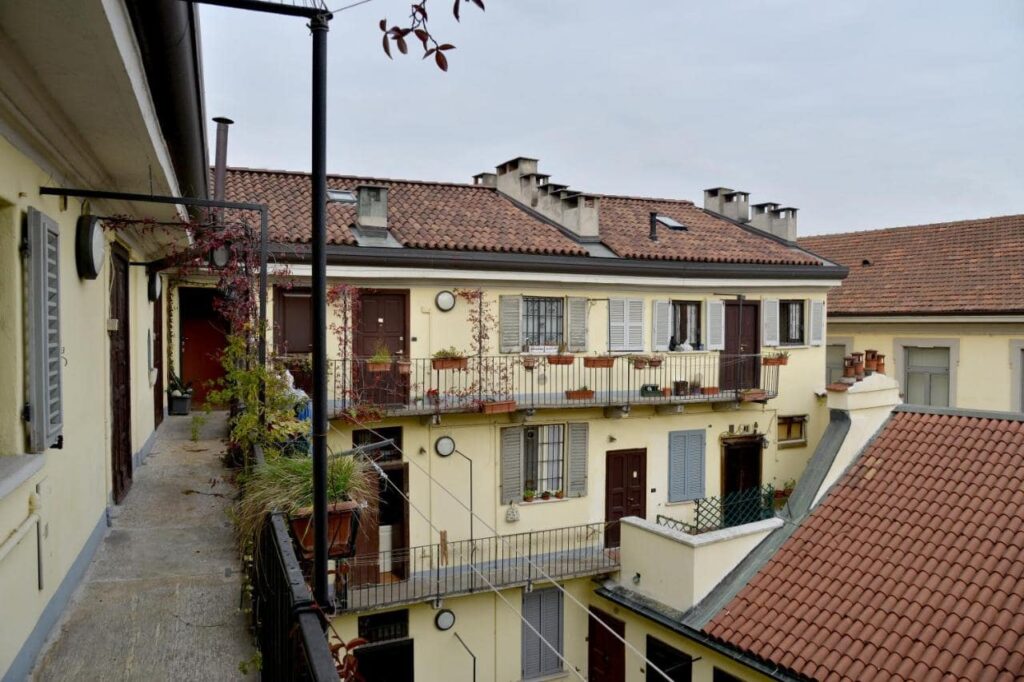
To view and download various examples of balcony houses in dwg format click here
Gallery building
This type of building represents an alternative to the balcony type as the collective entrance path to the houses is centrally located between two rows of apartments instead of next to the only one to be served. The galleries, which like the galleries have a distributive function, are inserted every three floors and serve a large number of accommodations; for this reason they are perfect when you need to accommodate many inhabitants.
See for example Le Corbusier’s Housing Unit in Marseille
Block building
These are complexes of houses that develop around internal courtyards or stairwells and which, precisely because of this peculiarity, differ from buildings in line. Usually the housing slats are not located in front of each other but orthogonal, so as to create various conformations such as the C, L and U-shaped complexes.
To view many examples of aggregations between housing units click here
COLLECTIVE RESIDENCES
Born from the evolution of social needs and a new housing demand, these include student residences, residences for the elderly, co-housing and social housing. Collective buildings boast an added value compared to normal residential complexes: the presence of common spaces intended to host collective activities and additional services. In this way, the sizes of the apartments are somewhat sacrificed in favor of areas that can be used by all where the sharing of time and material goods develop sociality and collective well-being.
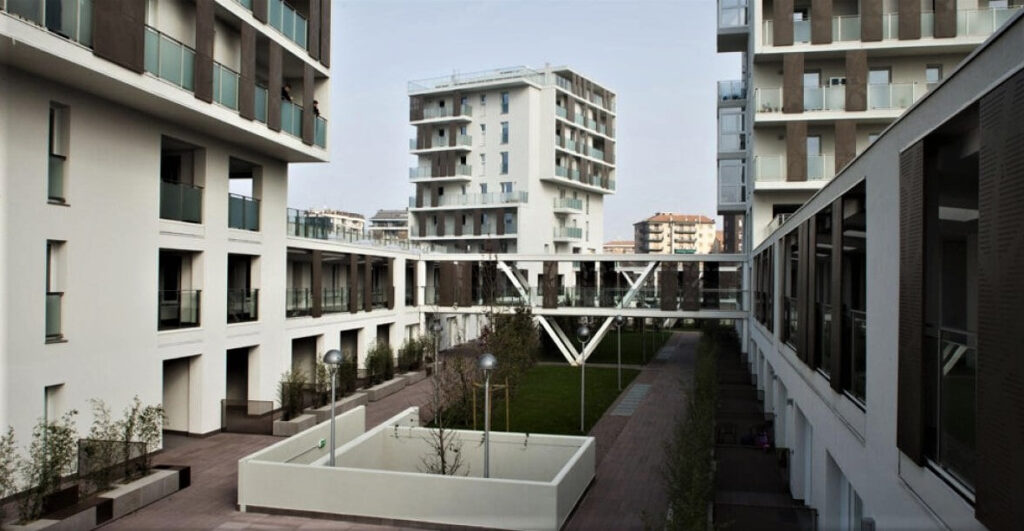
To view various examples of residences for the elderly click here
In conclusion, it is good to remember how every type of housing is born from specific needs linked to the time and place where it stands. The buildings are often an element capable of connoting the features of the city and of passing down the traditions and values typical of the territory in which they are located from generation to generation.
Over the years, the residential construction sector has undergone variations linked to specific constraints and economic needs, but some elements usually persist despite undergoing changes and new interpretations. For those who live in such buildings, it is important to know their characteristics and “types”, keeping the sense of belonging alive and to this end a big contribution must be made by the correct design.
Cover photo: Phelle on freelimages.com



























































